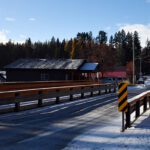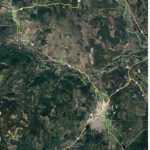Home »

Wolverine Watch welcomes sightings and info
Wolverines: known to be tough by nature, are also tough to find and study.
Now, for the second year in a row, recreationists in southeastern British Columbia are presented with the exciting chance to put their ‘community scientist’ hats on.

Wolverine researchers need the community’s help to better understand this elusive species-at-risk.
Wolverine Watch is a scientific collaboration of researchers from British Columbia and Alberta. These scientists are asking people who ski, snowshoe, snowmobile or take part in other winter activities in the Canadian Rockies and associated mountain ranges to keep their eyes peeled for signs of wolverines and share what they see.
Thanks to those who took part in last year’s project, Wolverine Watch researchers say they’ve had more than 300 submitted reports of wolverine tracks, as well as actual wolverines; five reports of dens, including some from Alberta; and several sightings from highways. These are particularly helpful because they provide extra information about the wide-ranging wolverine’s connectivity and movement.
“Wolverine roam far and wide and may be sensitive to changes to their habitat from a range of factors, including human activity and climate changes,” said Candace Batycki, program director at Yellowstone to Yukon Conservation Initiative, one of the project’s partners. “We are studying wolverines to understand impacts on these sensitive animals and their habitat, and the community’s involvement has made a big impact.”
Researchers are looking for peoples’ sightings of wolverine, wolverine tracks, scats and dens, or what people might think is a sign of a wolverine. Observations are welcome from across Western Canada and the Rocky Mountains, particularly the Selkirk, Purcell, Monashee, Columbia and Cariboo ranges of southeastern British Columbia.
Reports can be submitted on the Wolverine Watch website.
While the chances of seeing a wolverine are rare, dens and tracks are more common and easier to see because the mammals have a characteristic way of walking and paw print. Wolverines are highly sensitive to disturbance, so it’s very important that after people record their observation, they move on and do not follow the tracks.
“Wolverines are naturally rare, solitary and travel long distances over massive areas to find food — more than 500 square kilometres. We are thrilled about the great engagement from community scientists so far but there’s still lots of winter recreation time left so we’re hoping people will keep submitting their sightings.”
Doris Hausleitner, who co-leads the project, says wolverines have distinct paths as they usually travel in a line, sometimes for kilometres at a time, as if they are on a mission.
“Wolverine generally leave behind a diagonal pattern of tracks in sets of twos or threes,” she says. Their tracks can be found in the valley bottom and in forests but are more often encountered high up above the tree-line, where they are visible from quite far away.”
The South Columbia Mountains Wolverine Project is one of several Wolverine Watch projects collecting data in western North America to better understand the impacts of human activity on wolverine distribution, reproduction, connectivity and gene flow. Research regions include Canada’s northern Columbia region, the southern Columbia region and the Canadian portion of the Crown of the Continent ecosystem – all of which are critical to the integrity of the Yellowstone to Yukon region.
Data will be used to inform agency decision-makers, landowners, natural resource companies and First Nations to ensure the needs of wolverines are incorporated into land use plans, management plans, highway mitigation and other projects.
This collaborative project educates and engages communities, while building public support for conserving the integrity of large landscapes, habitat connectivity and human-wildlife co-existence.
Lead image: A look at a wolverine track. From wolverinewatch.org
Yellowstone to Yukon Conservation Initiative







